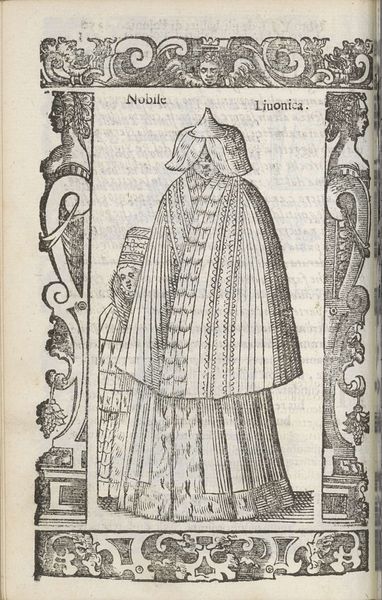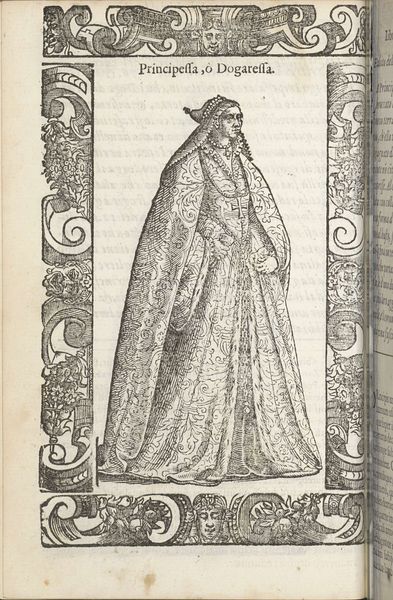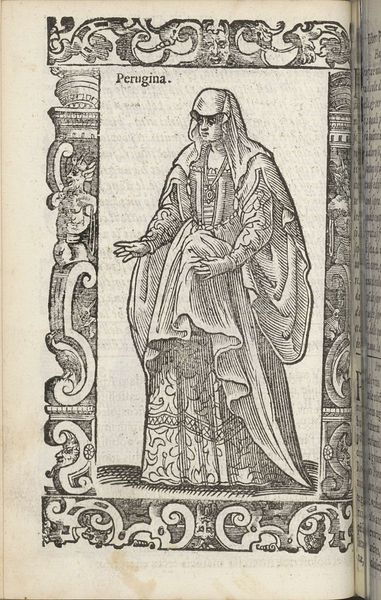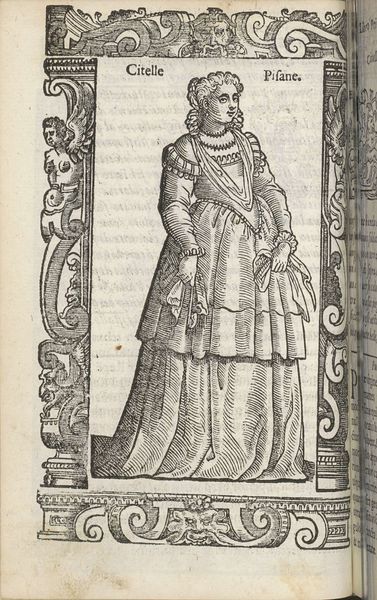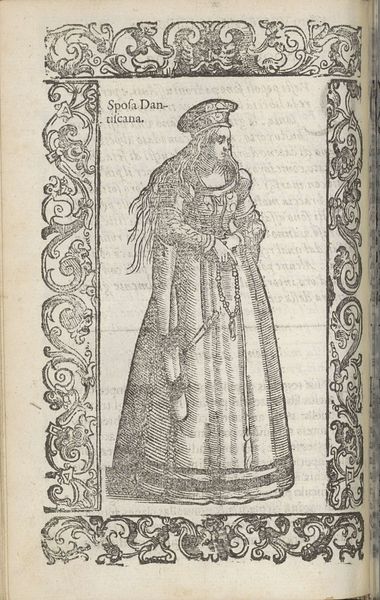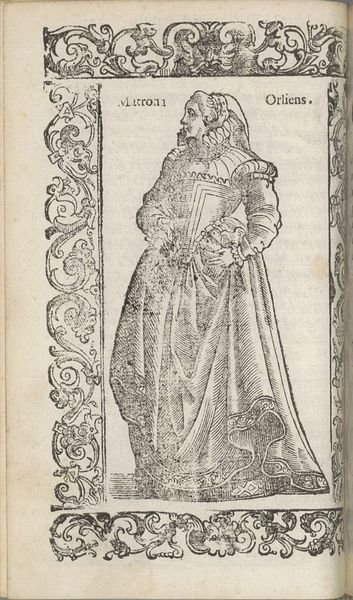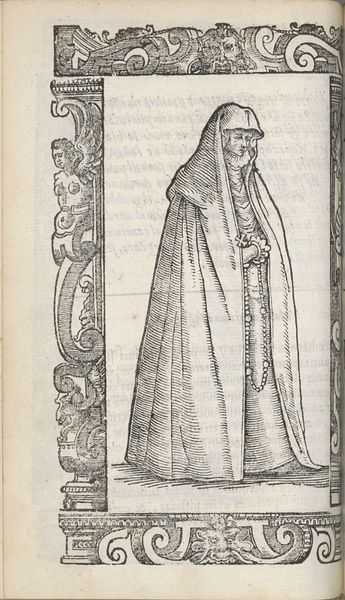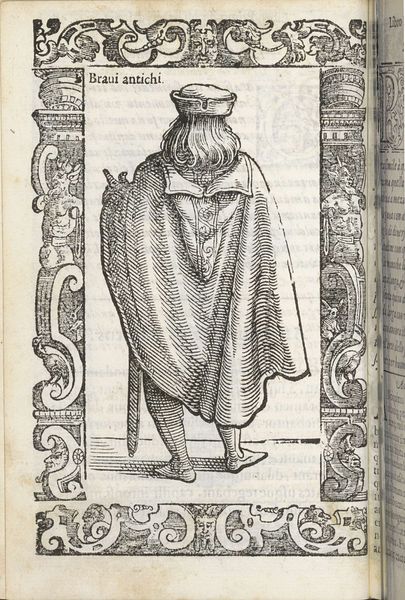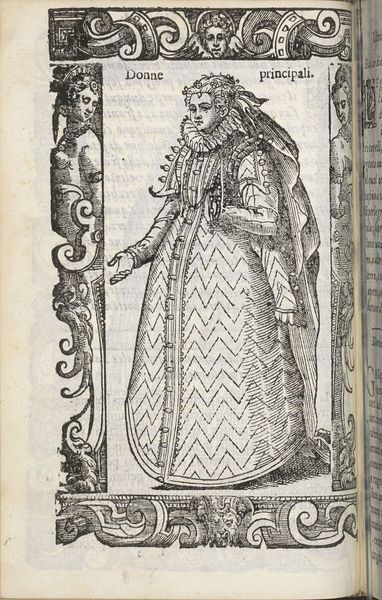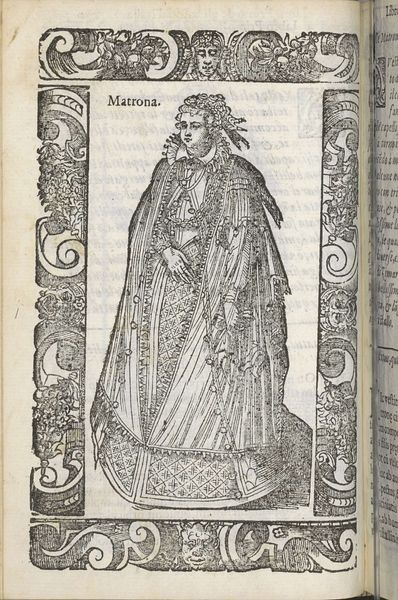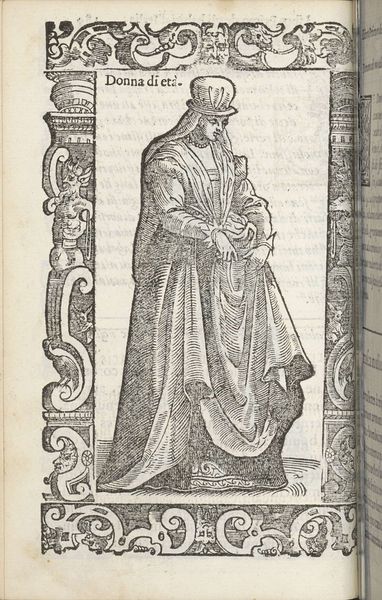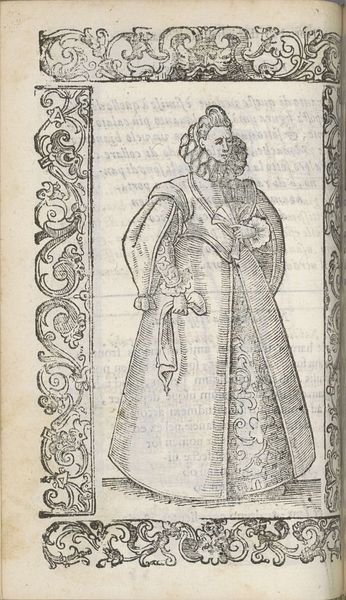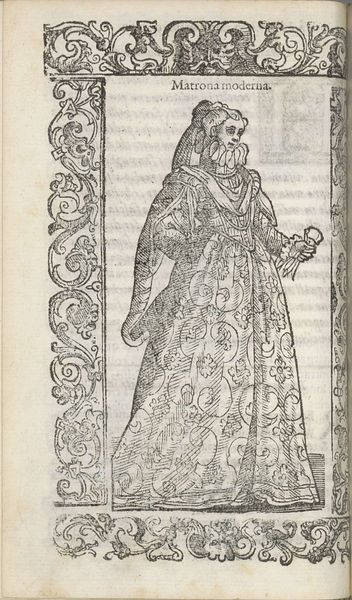
print, engraving
#
portrait
#
medieval
# print
#
11_renaissance
#
northern-renaissance
#
engraving
Dimensions: height 167 mm, width 125 mm
Copyright: Rijks Museum: Open Domain
Curator: Christoph Krieger's 1598 engraving, "Matrona Senele", captures a Northern Renaissance aesthetic in stark monochrome. What's your initial read? Editor: It feels... constrained. There's so much intricate detail packed into such a small space; I almost feel a bit claustrophobic looking at it. A very detailed, small cage. Curator: Indeed. The visual density speaks volumes. Note how Krieger uses the engraving technique to create variations in texture and tone. The ornamentation borders frame the subject—Matrona herself. This acts almost like another, internal frame. Editor: All the geometric patterning in the skirt seems to fight for attention. It almost diminishes the importance of Matrona’s face. Like she’s hiding or, even, secondary. What was she trying to convey with all this dress? Curator: Well, clothing, then as now, functions as a semiotic system. Look at the meticulous rendering of fabric folds, the jewels adorning her neck and hat—these are all signifiers of status, wealth, and piety. She looks posed. This engraving wasn't just about visual representation but about constructing an idealised persona. Editor: Status through stress? The rigidity and density feels overwhelming to the eye, no doubt a signifier to what she's willing to withstand for stature, literally encasing herself. You would lose me at the hat itself. I do appreciate those dark contrasting borders that, quite frankly, don't really do anything for her silhouette. I think it's supposed to offer ornate detailing but simply becomes a barrier to connection with her as a subject. Curator: That’s an astute observation. By focusing on line quality and spatial organization, the intent feels deliberate. Krieger uses visual techniques to encode her virtue. She might not want you connecting so personally. Editor: Fair point, I suppose. Though, a different artistic direction might offer just as much status. The overall composition does demand reflection though, doesn’t it? Makes me consider those hidden rules behind her gaze... What could she say about our views today? Curator: Exactly. By understanding the formal language of the artwork, we unlock deeper understandings of its context. The visual tension—in this piece specifically—mirrors the historical moment it was made within.
Comments
No comments
Be the first to comment and join the conversation on the ultimate creative platform.
